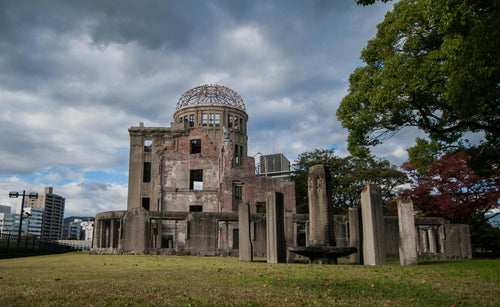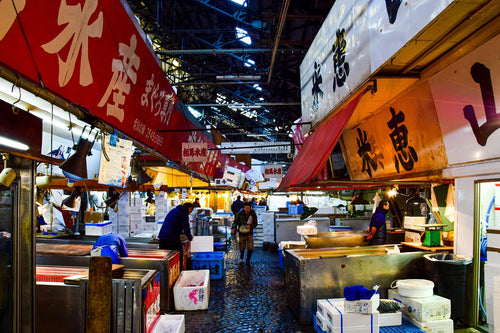
Preparation Checklist for a Trip to Japan
Preparing for a trip to Japan can be an exciting experience filled with anticipation and planning. Japan is known for its unique blend of traditional and modern attractions, from historic temples and shrines to bustling cities and high-tech innovation. With the right preparation, you can make the most of your journey and enjoy a smooth, memorable trip. This checklist covers all essential steps to help you prepare, from understanding entry requirements to packing efficiently for Japan’s diverse climate and cultural norms.
Contents
1. Entry Requirements and Travel Documents
6. Managing Currency and Budget
7. Learning Basic Japanese and Cultural Etiquette
1. Entry Requirements and Travel Documents
Before you head to Japan, ensure that your travel documents are in order. Most travelers need a valid passport, and depending on your nationality, a visa may be required. Japan has specific entry policies based on the length and purpose of your stay, so verify the requirements with the Japanese consulate in your country.
Essentials: Passport (with at least six months validity), a printed itinerary, hotel bookings, and any required visas. It’s also wise to have a copy of your travel insurance policy and contact information in case of emergencies.
2. Planning Your Itinerary
Japan offers an extensive range of attractions, and planning your itinerary in advance will help you make the most of your time. Consider prioritizing major destinations such as Tokyo, Kyoto, Osaka, and Hokkaido, depending on your interests.
Research Key Sites: Look into specific attractions, local festivals, and events that align with your travel dates. Booking tickets for popular spots like the Tokyo Skytree, Universal Studios Japan, or the Ghibli Museum ahead of time can help you avoid long lines or sold-out days.
3. Booking Accommodations
Booking your accommodations in advance is essential, especially during peak travel seasons like cherry blossom season in spring and the autumn foliage period. Japan offers a variety of accommodations, from luxury hotels and traditional ryokan inns to affordable hostels and capsule hotels.
Options to Consider: For a more traditional experience, try staying in a ryokan, where you can enjoy tatami rooms and onsen hot springs. If you prefer modern amenities, major cities like Tokyo and Osaka have a wide range of Western-style hotels.
4. Transportation Essentials
Japan has one of the most efficient and convenient public transportation systems in the world. The Japan Rail Pass is a popular choice for international tourists, allowing unlimited travel on most JR trains, including Shinkansen (bullet trains), for a set number of days. If you plan to explore multiple regions, the JR Pass can be a cost-effective option.
Local Transit Options: In addition to the JR Pass, consider getting an IC card, such as a Suica or Pasmo card, which can be used on subways, buses, and even in many convenience stores. This card is rechargeable and simplifies travel within cities.
5. Packing Guide for Japan
Packing appropriately for Japan’s climate and culture can make a significant difference in your travel experience. Japan has four distinct seasons, and the weather can vary widely depending on the region. Here are some essentials to consider for each season:
Spring (March to May): Lightweight clothing, a light jacket, and comfortable walking shoes for cherry blossom season.
Summer (June to August): Lightweight, breathable clothes, sunscreen, a hat, and insect repellent. The summer can be hot and humid, especially in cities.
Autumn (September to November): Layered clothing, a warm sweater, and a light jacket to enjoy the cooler temperatures and colorful foliage.
Winter (December to February): Warm clothing, a coat, gloves, and comfortable boots, especially if visiting northern areas like Hokkaido.
6. Managing Currency and Budget
Japan is primarily a cash-based society, so it’s advisable to have yen on hand, especially when traveling to rural areas where card payments may not be accepted. ATMs in convenience stores, post offices, and banks allow for easy currency withdrawal using international cards.
Money-Saving Tips: To save on costs, consider eating at convenience stores, local markets, and affordable restaurants. Many attractions also offer discounts with passes like the Tokyo Metro 24-hour Ticket and regional travel passes.
7. Learning Basic Japanese and Cultural Etiquette
Learning a few basic Japanese phrases and understanding cultural etiquette can greatly enhance your experience. Greetings like “konnichiwa” (hello), “arigatou” (thank you), and “sumimasen” (excuse me) are appreciated by locals.
Cultural Tips: Bowing is a common form of greeting, and removing your shoes when entering homes, temples, and some restaurants is customary. Being aware of quietness on public transportation and proper behavior in shared spaces is also essential in Japan.
8. Safety and Health Preparations
Japan is considered one of the safest countries for travelers. However, it’s still wise to be prepared. Travel insurance is highly recommended to cover any unexpected medical expenses or travel disruptions.
Essential Safety Tips: Register your travel itinerary with your country’s embassy in Japan if available. Also, Japan is located in an earthquake-prone region, so it’s useful to know basic earthquake safety protocols.
9. Final Tips for a Smooth Trip
With your preparations in place, here are a few additional tips to ensure a seamless journey:
Stay Connected: Consider renting a pocket Wi-Fi device or getting a local SIM card for reliable internet access. Many cafes, hotels, and public areas also offer free Wi-Fi.
Respect Local Norms: Japanese culture values respect, cleanliness, and orderliness. Following local customs, such as being mindful of noise levels, disposing of trash properly, and following signs, will enhance your experience and interactions with locals.
Conclusion
With thorough preparation, your trip to Japan will be both enjoyable and memorable. By covering these essentials—from entry requirements and packing to understanding cultural norms and staying safe—you can confidently embark on your journey. Japan offers a unique blend of experiences, and with this checklist, you’ll be ready to embrace all the country has to offer. Safe travels!
分享
You may also like
-

聯合國教科文組織世界遺產日本旅遊指南
日本擁有許多聯合國教科文組織世界遺產,每個組織都可以讓您一窺該國豐富的文化遺產和自然美景。這些遺址,從古老的寺廟、歷史悠久的城堡到風景優美的風景,體現了日本的歷史意義和對大自然的敬畏。參觀這些遺址不僅可以讓遊客欣賞日本的建築和精神歷史...
-

東京6處最佳夜景景點
東京的夜晚是令人驚嘆的奇觀,燈火通明的摩天大樓、標誌性地標和熙熙攘攘的街道營造出充滿活力的夜間城市景觀。對於當地人和遊客來說,東京提供了一系列夜景景點,展示了這座城市的活力。本指南介紹了體驗東京迷人夜景的六個最佳地點,每個地點都提供獨...
-

東京市場指南:探索築地與豐洲市場
東京的築地市場和豐洲市場是美食愛好者和對日本豐富的烹飪文化感興趣的任何人的必去景點。這兩個市場都讓遊客可以一睹日本海鮮產業的核心,每天都有新鮮的魚類和農產品交易,供應商和買家聚集在一起採購最好的食材。築地保留了其作為歷史悠久的露天市場...
-

東京必去的 8 家主題酒吧和咖啡館
東京以其創意和奇特的主題酒吧和咖啡館而聞名,為當地人和遊客提供身臨其境的體驗。從受喜愛的動漫人物啟發的咖啡館到裝飾精美的酒吧,這些場所都能提供令人難忘的體驗。以下是東京八家必去的主題酒吧和咖啡館的指南,它們展示了這座城市的俏皮精神和對...
目前沒有相關文章。




